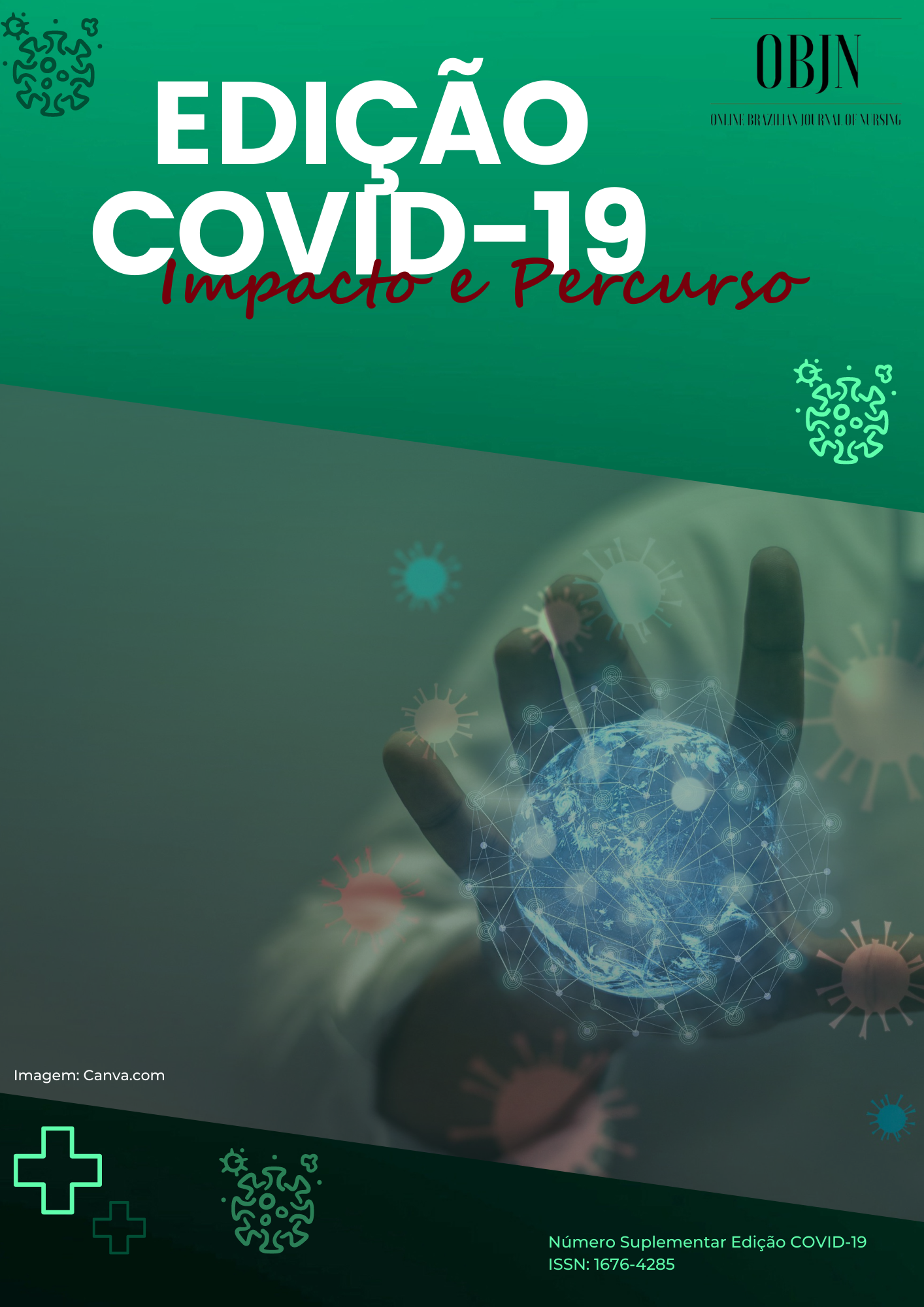Resumo
Objetivo: avaliar a incidência de lesão por pressão na posição prona e seus fatores de risco em pacientes admitidos em unidades de terapia intensiva diagnosticados com COVID-19. Métodos: trata-se de um estudo de coorte prospectiva (n=30) com duração de seis meses. Informações relacionadas a estado da prona, tempo de duração, presença ou ausência de lesão por pressão e características sociodemográficas e clínicas foram coletadas. Estatística descritiva e inferencial foi realizada para comparar os pacientes que desenvolveram e os que não desenvolveram lesão por pressão. Para análise dos dados, foi utilizada Regressão de Poisson com variância robusta. Resultados: o tempo médio na posição prona foi de 20,1 horas (DP=3,9). A incidência de lesão por pressão foi de 70%, sendo as localizações mais comuns: tórax esquerdo, abdômen, bochechas e testa. Ao comparar os grupos com e sem lesão por pressão, não houve diferença entre eles (p>0,05). Conclusão: a incidência não foi associada a nenhuma variável sociodemográfica ou clínica dos pacientes.
Referências
Foti G, Giannini A, Bottino N, Castelli GP, Cecconi M, Grasselli G, et al. Management of critically ill patients with COVID-19: suggestions and instructions from the coordination of intensive care units of Lombardy. Minerva Anestesiol. 2020;86(11):1234-45. http://dx.doi.org/10.23736/S0375-9393.20.14762-X. Pmid:33228329.
Langer T, Brioni M, Guzzardella A, Carlesso E, Cabrini L, Castelli G, et al. Prone position in intubated, mechanically ventilated patients with COVID-19: a multi-centric study of more than 1000 patients. Crit Care. 2021;25(1):128. http://dx.doi.org/10.1186/s13054-021-03552-2. PMid:33823862.
Gattinoni L, Busana M, Giosa L, Macrì M, Quintel M. Prone positioning in acute respiratory distress syndrome. Semin Respir Crit Care Med. 2019;40(01):094-100. http://dx.doi.org/10.1055/s-0039-1685180.
Brochard L, Slutsky A, Pesenti A. Mechanical ventilation to minimize progression of lung injury in acute respiratory failure. Am J Respir Crit Care Med. 2017;195(4):438-42. http://dx.doi.org/10.1164/rccm.201605-1081CP. PMid:27626833.
Lucchini A, Bambi S, Mattiussi E, Elli S, Villa L, Bondi H, et al. Prone position in acute respiratory distress syndrome patients: a retrospective analysis of complications. Dimens Crit Care Nurs. 2020;39(1):39-46. http://dx.doi.org/10.1097/DCC.0000000000000393. PMid:31789984.
Haesler E. Prevention and treatment of pressure ulcers/injuries: clinical practice guideline. The international guideline 2019 [Internet]. Osborne Park: European Pressure Ulcer Advisory Panel, National Pressure Injury Advisory Panel, Pan Pacific Pressure Injury Alliance; 2019 [cited 2021 Mar 15]. Available from: https://www.biosanas.com.br/uploads/outros/artigos_cientificos/127/956e02196892d7140b9bb3cdf116d13b.pdf
Ibarra G, Rivera A, Fernandez-Ibarburu B, Lorca-García C, Garcia-Ruano A. Prone position pressure sores in the COVID-19 pandemic: the Madrid experience. J Plast Reconstr Aesthet Surg. 2021;74(9):2141-8. http://dx.doi.org/10.1016/j.bjps.2020.12.057. PMid:33446462.
Moore Z, Patton D, Avsar P, McEvoy NL, Curley G, Budri A, et al. Prevention of pressure ulcers among individuals cared for in the prone position: lessons for the COVID-19 emergency. J Wound Care. 2020;29(6):312-20. http://dx.doi.org/10.12968/jowc.2020. 29.6.312. PMid:32530776.
Munshi L, Del Sorbo L, Adhikari NKJ, Hodgson CL, Wunsch H, Meade MO, et al. Prone position for acute respiratory distress syndrome: a systematic review and meta-analysis. Ann Am Thorac Soc. 2017;14(Suppl 4):S280-8. http://dx.doi.org/10.1513/AnnalsATS.201704-343OT. PMid:29068269.
Feitosa DVS, Silva NSO, Pereira FNM, Almeida TF, Estevam AS. Atuação do enfermeiro na prevenção de lesão por pressão: uma revisão integrativa da literatura. REAS. 2020;43:e2553. http://dx.doi.org/10.25248/reas.e2553.2020.
von Elm E, Altman DG, Egger M, Pocock SJ, Gøtzsche PC, Vandenbroucke JP. The strengthening the reporting of observational studies in epidemiology (STROBE) statement: guidelines for reporting observational studies. Int J Surg. 2014;12(12):1495-9. http://dx.doi.org/10.1016/j.ijsu.2014.07.013. PMid:25046131.
Paranhos WY, Santos VL. Avaliação de risco para úlceras de pressão por meio da escala de Braden, na língua portuguesa. Rev Esc Enferm USP [Internet]. 1999 [cited 2021 Mar 15];33:191-206. Available from: http://www.ee.usp.br/reeusp/upload/pdf/799.pdf
Salluh JI, Soares M. ICU severity of illness scores: APACHE, SAPS and MPM. Curr Opin Crit Care. 2014;20(5):557-65. http://dx.doi.org/10.1097/MCC.0000000000000135. PMid:25137401.
Jansen RCS, Silva KBA, Moura MES. Braden Scale in pressure ulcer risk assessment. Rev Bras Enferm. 2020;73(6):e20190413. http://dx.doi.org/10.1590/0034-7167-2019-0413. PMid:32785503.
Chen W, Qian L, Shi J, Franklin M. Comparing performance between log-binomial and robust Poisson regression models for estimating risk ratios under model misspecification. BMC Med Res Methodol. 2018;18(1):63. http://dx.doi.org/10.1186/s12874-018-0519-5. PMid:29929477.
Zhu J, Ji P, Pang J, Zhong Z, Li H, He C, et al. Clinical characteristics of 3062 COVID‐19 patients: a meta‐analysis. J Med Virol. 2020;92(10):1902-14. http://dx.doi.org/10.1002/jmv.25884. PMid:32293716.
Shearer SC, Parsa KM, Newark A, Peesay T, Walsh AR, Fernandez S, et al. Facial pressure injuries from prone positioning in the COVID-19 era. Laryngoscope. 2021;131(7):E2139-42. http://dx.doi.org/10.1002/lary.29374. PMid:33389768.
Zingarelli EM, Ghiglione M, Pesce M, Orejuela I, Scarrone S, Panizza R. Facial pressure ulcers in a COVID-19 50-year-old female intubated patient. Indian J Plast Surg. 2020;53(1):144-6. http://dx.doi.org/10.1055/s-0040-1710403. PMid:32367931.
Patton D, Latimer S, Avsar P, Walker RM, Moore Z, Gillespie BM, et al. The effect of prone positioning on pressure injury incidence in adult intensive care unit patients: a meta-review of systematic reviews. Aust Crit Care. 2021;1036(21):161-2. http://dx.doi.org/10.1016/j.aucc.2021.10.003
Alderden J, Rondinelli J, Pepper G, Cummins M, Whitney J. Risk factors for pressure injuries among critical care patients: a systematic review. Int J Nurs Stud. 2017;71:97-114. http://dx.doi.org/10.1016/j.ijnurstu.2017.03.012. PMid:28384533.

Este trabalho está licenciado sob uma licença Creative Commons Attribution 4.0 International License.
Copyright (c) 2022 Array

